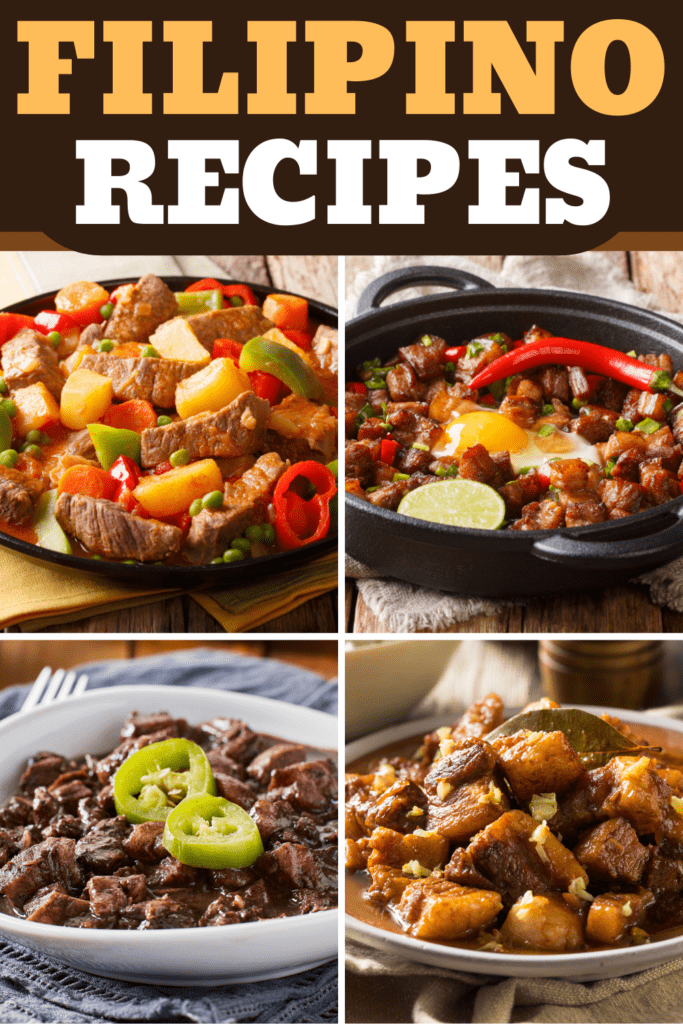Authentic Filipino Food Recipes to Attempt in your home
Checking out authentic Filipino food dishes provides a possibility to appreciate the detailed tastes and social relevance behind each dish. From the well-liked Adobo, with its savory marinate, to the zesty Sinigang that symbolizes the significance of Filipino comfort, these recipes invite a deeper understanding of conventional cooking techniques. Utilizing fresh, local components is vital, as is accepting communal dining-- a trademark of Filipino society. As we think about the crucial aspects and strategies that define these cooking prizes, one might question what details recipes can genuinely record the heart of this vivid cuisine.
Popular Filipino Dishes
Filipino food flaunts an abundant tapestry of tastes and traditions, with over a loads legendary recipes that highlight the nation's diverse social impacts. Among one of the most popular recipes is Adobo, a full-flavored stew usually made with poultry or pork, marinaded in vinegar, soy sauce, garlic, and seasonings. Its zesty taste profile makes it a staple in Filipino families.
One more cherished dish is Sinigang, a sour soup commonly made with tamarind, tomatoes, and numerous vegetables. This dish can include pork, shrimp, or fish, and its refreshing taste is perfect for cozy climates. For those with a craving for sweets, Leche Flan-- a velvety caramel custard-- serves as a preferred dessert, showcasing the Filipino propensity for abundant, pleasant flavors.
Kare-Kare, a hearty oxtail stew with a thick peanut sauce, in addition to the iconic lumpia, or springtime rolls, additionally exemplify the variety discovered in Filipino food. Each meal not just supplies special tastes however likewise tells a story of local components and historic influences, making Filipino food a dynamic reflection of its society and heritage.
Vital Components for Filipino Food Preparation
The essence of Filipino food preparation depends on its essential components, which work as the structure for the nation's precious meals. A selection of tastes and textures integrated, showcasing the varied cultural influences that form Filipino food.
Key active ingredients consist of rice, the staple that comes with almost every meal, signifying nourishment and area. Soy sauce, vinegar, and fish sauce (patis) are essential for flavoring, conveying umami and deepness to meals. Fresh natural herbs like cilantro and basil include aromatic freshness, while garlic, onion, and ginger supply a durable flavor base.
Healthy protein sources such as pork, poultry, and fish and shellfish are central to numerous recipes, usually marinated to enhance taste. Vegetables like eggplant, bitter melon, and environment-friendly beans add essential nutrients and balance - Filipino food recipes. Coconut milk is one more considerable component, offering creaminess and a refined sweet taste to different stews and treats
Lastly, calamansi, a citrus fruit, provides a revitalizing flavor that boosts dishes and beverages alike. With each other, these active ingredients produce the vibrant and rich tapestry of flavors that define Filipino food, making it both comforting and distinctive. Comprehending these basics is important for any individual aiming to duplicate authentic Filipino recipes in your home.
Step-by-Step Recipe Guide

Start by preparing your ingredients. For Adobo, slice the meat click to read right into uniform pieces and marinade it in soy sauce, vinegar, garlic, and bay leaves for at the very least 30 mins. Next off, heat oil in a frying pan and sauté the garlic and onions till fragrant, then include the marinated meat, enabling it to brownish equally.
For Sinigang, begin by boiling water in a pot and including your selection of meat. Once tender, integrate tamarind paste or fresh tamarind for that trademark sour flavor. Follow with veggies like radish and kangkong, cooking until just tender.

Tips for Authentic Taste
Usually, attaining authentic taste in Filipino dishes depends upon the careful selection and therapy of active ingredients. Begin with fresh, high-quality fruit and vegetables, as the vibrancy of vegetables and natural herbs dramatically enhances the recipe's overall preference. Staples like garlic, onions, and ginger form the aromatic structure for many dishes; utilizing them in correct proportions is critical.
Selecting the ideal healthy protein is equally crucial. Traditional adobo commonly employs poultry or pork, marinated to absorb the marinate's complete taste. In addition, take into consideration sourcing in your area produced or local active ingredients, as they can offer credibility that store-bought choices lack.
Cooking methods likewise play an essential function. Slow-cooking methods, such as braising or stewing, enable tastes to meld magnificently, while frying can add a gratifying appearance. Don't overlook seasoning; utilizing salt, fish sauce, or soy sauce at the ideal minutes can boost a dish considerably.
Serving and Delighting In Filipino Food
Culinary experiences are enhanced when Filipino food is served with interest to tradition and area. The technique of sharing dishes is main to Filipino society, representing unity and hospitality. When serving Filipino meals, think about using conventional serveware, such as clay pots or bamboo baskets, which improve the credibility of the experience.
Normally, Filipino dishes are taken pleasure in family-style, with a selection of dishes placed at the center of the table. This communal approach urges interaction and allows visitors to sample different tastes. A well-curated spread view website could consist of staples like adobo, sinigang, and lumpia, enhanced by rice, which is an essential element of every meal.
Accompanying the food click this link with conventional spices, such as soy sauce, vinegar, or chili paste, can boost the eating experience, inviting diners to tailor their plates to their preferences. Additionally, incorporating neighborhood beverages, like calamansi juice or tuba, can boost the general taste profile.
Conclusion
